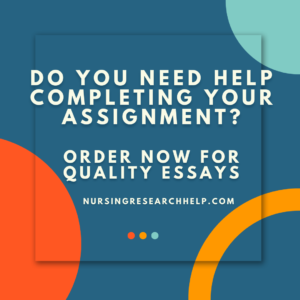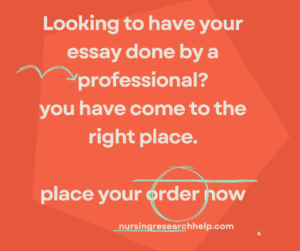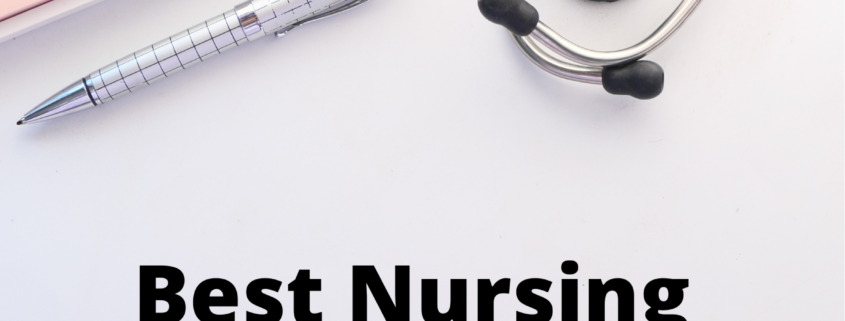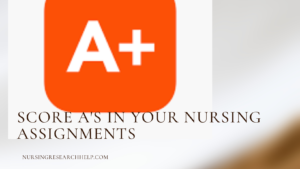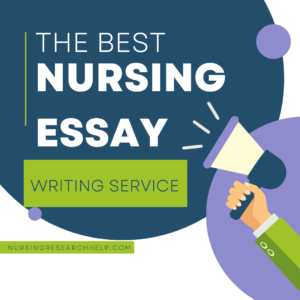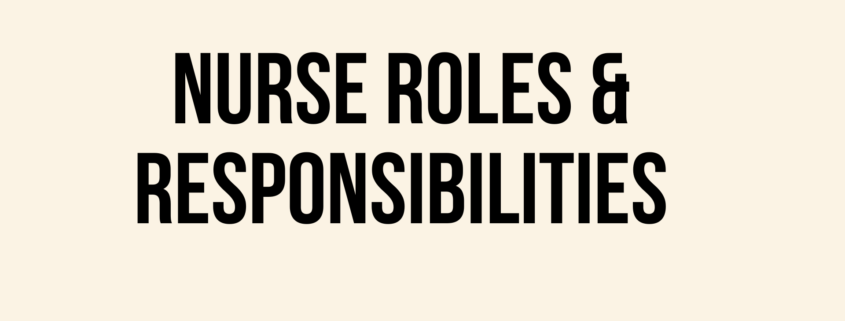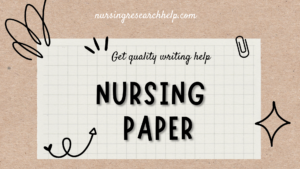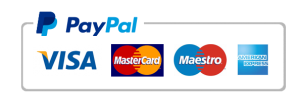How Nursing Students Fortify Mental Resilience in 2024
How Nursing Students Fortify Mental Resilience

Introduction:
How Nursing Students Fortify Mental Resilience
Embarking on the journey of nursing education is a profound and rewarding experience, but it also comes with its share of challenges and stressors. From rigorous coursework to demanding clinical rotations, nursing students often find themselves navigating a complex landscape that tests not only their academic abilities but also their mental resilience.
In this comprehensive guide, we will explore how nursing students fortify mental resilience and provide practical strategies to fortify this essential attribute. Nursing is not just a profession; it’s a calling that demands dedication, compassion, and resilience. Nursing students embark on a journey filled with challenges, opportunities, and personal growth.
However, this journey can also be overwhelming, pushing students to their limits both academically and emotionally. In this article, we look into the importance of mental resilience for nursing students and explore practical strategies to help them navigate the obstacles they encounter.
Additionally, we will highlight how NursingResearchHelp.com can support nursing students in their academic journey, offering expert assistance with assignments, essays, research, and case studies tailored specifically to their needs.
Understanding Mental Resilience
Before delving into strategies for building mental resilience, it’s essential to understand what resilience entails. Mental resilience refers to the ability to adapt and bounce back from challenges, setbacks, and adversity. It involves cultivating a mindset that allows individuals to navigate stressful situations with grace and perseverance, rather than succumbing to despair or defeat.
For nursing students, mental resilience is particularly crucial given the demanding nature of their academic and clinical responsibilities. Mental resilience is more than just bouncing back from adversity; it’s about thriving in the face of challenges, adapting to change, and maintaining emotional well-being. For nursing students, mental resilience is a vital asset that enables them to cope with the demanding workload, handle the emotional strain of patient care, and overcome setbacks in their academic and clinical experiences. Developing mental resilience empowers nursing students to face the complexities of their education and future careers with strength, determination, and optimism.
Recognizing the Challenges Faced by Nursing Students

nursingresearchhelp.com
Challenges faced by nursing students: These challenges include:
1. Academic Pressure
Nursing education involves rigorous academic coursework that covers a broad range of topics, including anatomy, physiology, pharmacology, and
Academic Pressure: Nursing education involves rigorous academic coursework that covers a broad range of topics, including anatomy, physiology, pharmacology, and nursing theory. Nursing students are often required to master complex concepts and theories while maintaining high academic standards.
The volume of material to learn and the pace of instruction can create significant academic pressure, leading to stress, anxiety, and feelings of overwhelm. Additionally, nursing programs typically have strict GPA requirements for progression and graduation, adding to the pressure to perform well academically.
2. Clinical Demands:
Clinical rotations are a fundamental component of nursing education, providing students with hands-on experience in healthcare settings under the supervision of clinical instructors. While clinical placements offer valuable opportunities for learning and skill development, they also present unique challenges. Nursing students must navigate unfamiliar environments, work with diverse patient populations, and perform clinical skills under pressure. Balancing clinical responsibilities with academic coursework and personal obligations can be demanding, requiring strong time management and organizational skills.
3. Emotional Stress:
Nursing students are exposed to human suffering, illness, and death as part of their clinical experiences. Witnessing the pain and trauma experienced by patients can take a toll on students’ emotional well-being, leading to compassion fatigue, vicarious trauma, and burnout. Additionally, nursing students may experience emotional stress related to their own academic performance, clinical competency, and professional identity formation. Coping with the emotional demands of nursing education requires resilience, self-awareness, and effective coping strategies.
4. Work-Life Balance:
Balancing the demands of nursing school with personal responsibilities and obligations can be challenging for many students. Nursing education requires a significant time commitment, including attending lectures, completing assignments, studying for exams, and participating in clinical rotations. Some nursing students may also have family responsibilities, work obligations, or other commitments outside of school.
Finding time for self-care, relaxation, and maintaining relationships while managing academic and clinical demands can be difficult, leading to feelings of stress and overwhelm.
5. Financial Strain:
Nursing education can be expensive, with tuition costs, textbooks, clinical fees, and other expenses adding up quickly. Many nursing students rely on student loans, scholarships, or part-time employment to finance their education. Balancing the financial demands of nursing school with the need to cover living expenses can create financial strain for students, leading to worries about debt, financial instability, and future career prospects.
Financial stress can impact students’ academic performance, mental well-being, and overall quality of life, highlighting the importance of financial planning and support resources for nursing students.
These challenges underscore the importance of providing nursing students with comprehensive support, resources, and strategies to help them navigate the demands of nursing education successfully. From academic support services to mental health counseling to financial aid opportunities, addressing these challenges can enhance nursing students’ overall well-being and academic success.
The volume of material to learn and the pace of instruction can create significant academic pressure, leading to stress, anxiety, and feelings of overwhelm. Additionally, nursing programs typically have strict GPA requirements for progression and graduation, adding to the pressure to perform well academically.
Nursing education presents a unique set of challenges that can impact students’ mental well-being. These challenges may include academic pressure, long hours of study and clinical practice, exposure to suffering and trauma, and balancing personal and professional responsibilities. Additionally, the nature of the nursing profession, with its emphasis on compassion and care for others, can sometimes lead to emotional exhaustion and burnout if proper self-care measures are not in place.

nursingresearchhelp.com
Developing Coping Strategies
Developing Coping Mechanisms: Involves developing coping strategies that enable nursing students to effectively manage stress and adversity. One essential coping strategy is self-care, which encompasses activities that promote physical, emotional, and mental well-being.
This may include regular exercise, mindfulness practices such as meditation or deep breathing, maintaining a healthy diet, getting adequate sleep, and engaging in hobbies and activities that bring joy and relaxation.
Seeking Social Support
Nursing students can also strengthen their mental resilience by seeking social support from peers, mentors, and other members of their support network. Connecting with others who understand the challenges of nursing education can provide validation, encouragement, and a sense of camaraderie. Additionally, mentors and advisors can offer guidance, advice, and perspective, helping students navigate academic and personal challenges more effectively.
Cultivating Positive Thinking
Maintaining a positive outlook and re-framing negative thoughts is another crucial aspect of building mental resilience. Encouraging nursing students to cultivate a growth mindset, wherein challenges are viewed as opportunities for growth and learning, can help them approach obstacles with greater resilience and determination. Practicing gratitude and focusing on strengths and accomplishments can also bolster mental well-being and resilience.
Setting Realistic Goals and Expectations
Setting realistic goals and managing expectations is essential for preventing feelings of overwhelm and burnout. Nursing students should strive to set achievable goals that are aligned with their values and priorities, rather than succumbing to the pressure to excel at all costs. Breaking larger goals into smaller, manageable steps can make them feel more attainable and reduce feelings of anxiety and stress.
Developing Problem-Solving Skills
Nursing education often requires students to think critically and solve complex problems in high-pressure situations. Developing problem-solving skills is essential for building mental resilience and confidence in one’s ability to overcome challenges. Encouraging students to approach problems systematically, gather relevant information, explore potential solutions, and evaluate outcomes can enhance their resilience and adaptability in clinical practice.
Practicing Self-Compassion
Self-compassion involves treating oneself with kindness and understanding, especially in moments of failure or difficulty. Nursing students may encounter setbacks or make mistakes during their education, but it’s essential for them to cultivate self-compassion and recognize that imperfection is a natural part of the learning process. Encouraging students to be gentle with themselves and practice self-care during challenging times can foster resilience and emotional well-being.
Utilizing Professional Resources
In addition to personal coping strategies, nursing students can benefit from utilizing professional resources and support services. Academic advisors, counseling centers, and mental health professionals can offer guidance, counseling, and support tailored to students’ individual needs. Online platforms like NursingResearchHelp.com can also provide academic assistance with assignments, essays, research, and case studies, alleviating some of the academic stressors that contribute to mental strain.
How Nursing Students Fortify Mental Resilience By Exploring Stress Management Techniques
In addition to developing coping strategies, it’s crucial for nursing students to explore various stress management techniques that can help them effectively manage the pressures of their academic and clinical responsibilities. Techniques such as progressive muscle relaxation, guided imagery, and biofeedback can help students reduce physical tension and promote relaxation.
Mindfulness-based practices, such as mindfulness meditation and mindful breathing, can also be beneficial in cultivating present-moment awareness and reducing stress. Encouraging students to incorporate these techniques into their daily routine can provide them with valuable tools for maintaining mental well-being and resilience.
Building Resilience Through Reflection and Learning
Reflection is a powerful tool for building resilience and enhancing self-awareness in nursing education. Encouraging students to engage in regular reflection on their experiences, both positive and negative, can help them identify their strengths, areas for growth, and coping mechanisms.
Reflective practices such as journalism, group discussions, and debriefing sessions can foster a deeper understanding of the challenges they face and the strategies that are most effective for managing them. Additionally, promoting a culture of continuous learning and improvement can empower students to view setbacks as opportunities for growth and development, rather than insurmountable obstacles.
Fostering a Supportive Learning Environment
Creating a supportive learning environment is essential for nurturing mental resilience among nursing students. Faculty and clinical instructors play a crucial role in fostering a culture of support, encouragement, and empathy. By providing constructive feedback, recognizing students’ efforts and achievements, and offering guidance and mentor ship, educators can help students feel valued, empowered, and capable of overcoming challenges.
Additionally, fostering peer support networks and creating opportunities for collaboration and teamwork can enhance students’ sense of belonging and community, reducing feelings of isolation and enhancing their overall well-being.
Embracing Flexibility and Adaptability
Flexibility and adaptability are essential qualities for building mental resilience in nursing education and practice. Encouraging students to embrace change, remain open to new experiences, and adapt their strategies as needed can help them navigate uncertain situations with greater ease and confidence. Reminding students that it’s okay to ask for help and adjust their plans when necessary can empower them to overcome challenges more effectively.
In conclusion, mental resilience is a vital attribute for nursing students to cultivate as they navigate the rigors of nursing education and prepare for their future careers. By understanding the challenges they may face, developing coping strategies, seeking social support, cultivating positive thinking, setting realistic goals, and utilizing professional resources, nursing students can strengthen their resilience and thrive in the face of adversity.
Additionally, NursingResearchHelp.com stands ready to support nursing students in their academic journey, offering expert assistance with assignments, essays, research, and case studies tailored specifically to their needs. With the right tools, support, and mindset, nursing students can fortify their mental resilience and emerge stronger and more resilient healthcare professionals.


